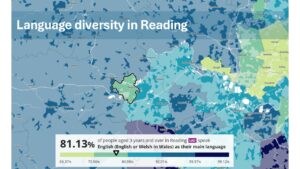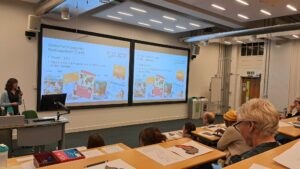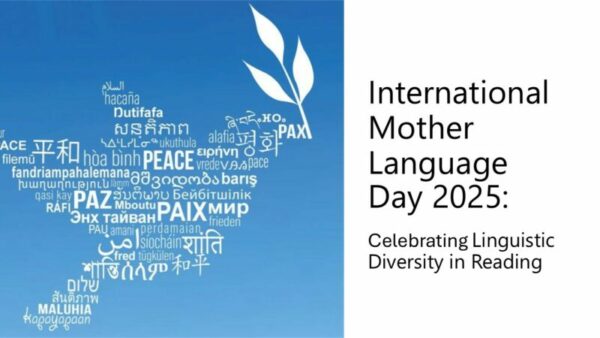By Holly Joseph (Professor in the Institute of Education)

On 21st February 2025, the Centre for Literacy and Multilingualism (CeLM) at the University of Reading hosted a vibrant and inspiring event to celebrate International Mother Language Day. We do this every year, but this Friday’s event was particularly meaningful because we were celebrating the rich linguistic diversity that defines our university and the town of Reading.
The event featured a range of activities and discussions that highlighted the importance of multilingualism and cultural heritage. CeLM director, Holly Joseph, presenting findings from a survey conducted at the university, which found that an astonishing 176 unique languages were reported by our community. While languages commonly taught in schools—French, German, and Spanish—remained dominant, other widely-spoke languages included Hindi, Italian, Russian, Polish Marathi, Welsh and Arabic, highlighting the breadth and depth of linguistic diversity present in Reading. Interestingly, languages varied by postcode, and students and staff at the university were very different from one another in terms of the languages most commonly spoken. Perhaps not surprisingly, students were significantly more multilingual than staff.
Highlights from the Evening
- Linguistic Journeys – Suzy Tutchell, Ingrid Nanne Lipmann and Vishnu Nair shared their own linguistic journeys which were all layered within historical and political contexts, including the Spanish conquest of Latin America and refugees during the Second World War. Vishnu’s poem was a particular highlight, in which he eloquently captured the complexities, challenges, and joys of navigating multiple languages in India, Australia, USA and the UK.
- Oxford Road Heritage Languages Project – Alice Mpofu-Coles spoke about a participatory research project centred on heritage languages spoken in the Oxford Road area of Reading, a hub of multilingual life and which she referred to as the “United Nations of Reading”.
- Multilingual Landscapes in Reading – Federico Faloppa explored how different languages are visually and aurally represented in public spaces, reflecting the city’s diverse linguistic identity.
- Language Portraits Activity – Led by Kari Sahan, attendees created personal language portraits, visually mapping out the languages they use in different aspects of their lives, fostering deeper reflection on linguistic identity.
- Multilingual Peace Doves –Suzy Tutchell invited participants to inscribe clay doves with words from their mother tongues. These doves will be glazed and displayed at our London Road campus, serving as a lasting tribute to the university’s commitment to linguistic and cultural inclusion.
- Q&A Session – Ludovica Serratrice concluded with an engaging Q&A session, where attendees shared their thoughts, experiences, and perspectives on the significance of multilingualism in both personal and academic spheres.
 The event was a true celebration of what we cherish most at the University of Reading: diversity, inclusion, and our incredible multilingual community. It served as a powerful reminder that language is more than just a tool for communication—it is a bridge to understanding, identity, and shared humanity. We look forward to continuing these important conversations and celebrating linguistic diversity in the years to come.
The event was a true celebration of what we cherish most at the University of Reading: diversity, inclusion, and our incredible multilingual community. It served as a powerful reminder that language is more than just a tool for communication—it is a bridge to understanding, identity, and shared humanity. We look forward to continuing these important conversations and celebrating linguistic diversity in the years to come.


